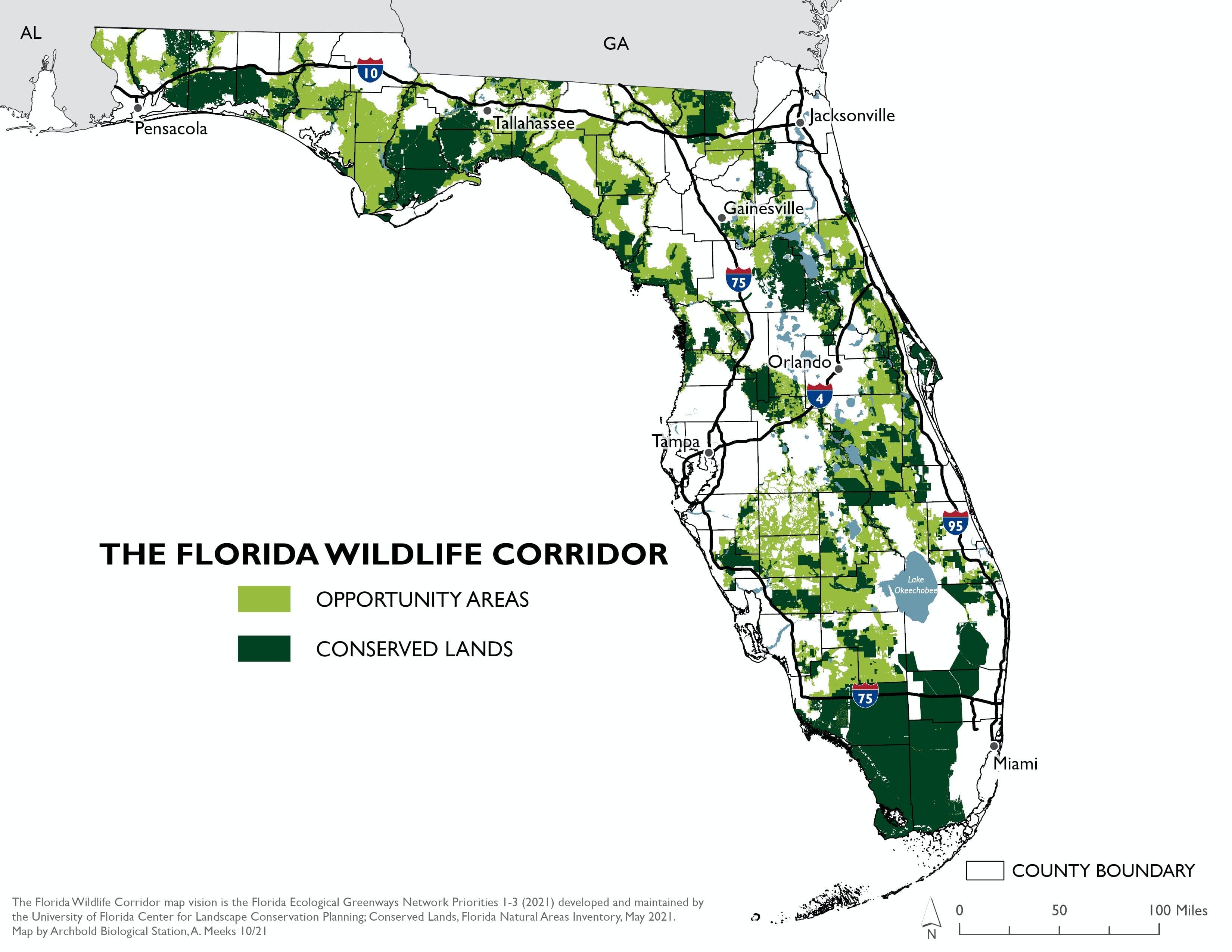 Photo by: Carlton Ward, Jr.
Photo by: Carlton Ward, Jr.OUR CONSERVATION:
PRIORITIES AND
IMPACT
We channel our scientific strengths to solve some of the biggest threats to Earth’s environmental sustainability—and work every day to safeguard the life, lands, and waters of Florida, and beyond.
Conservation Impacts

Saving the rarest of the rare
We help protect the rarest plants, animals, and ecosystems in the heart of Florida and beyond.

Sustaining Grasslands
We conserve natural and working grasslands through pioneering sustainability and conservation science.
 Photo by: Carlton Ward, Jr.
Photo by: Carlton Ward, Jr. Connecting large landscapes and wildlife corridors
We put science to work identifying and communicating the importance of expansive areas for wildlife and rural economies.
 Photo by: Calrton Ward
Photo by: Calrton WardAddressing climate change
We apply scientific rigor and long-term data to monitor and act on rising threats to ecosystems (and the people that rely on them).
Featured project
Archbold’s conservation activities are informed by decades of field science.
Land management
Setting the stage for conservation
Many Florida species need active land management to thrive in the 21st century. This includes controlled fires to renew overgrown lands (mimicking the role ‘natural’ fires play within the ecosystem)—as well as initiatives to control the spread of invasive species.

Fire Management
 Photo by: Kevin Main
Photo by: Kevin MainInvasive species
Listed species
Vulnerable plants and animals, in fragile habitats on our properties
Archbold Biological Station and Buck Island Ranch host a large number of species listed as threatened or endangered by state and federal agencies.


 Corridor Observatory
Corridor ObservatoryLandowner Assistance Resources
Learn about the landscape of financial and technical assistance opportunities available to landowners interested in managing, protecting, and conserving the natural resources and habitat on their land.
Conservation partners
Through collaboration with other sustainability-minded institutions, Archbold is helping to create new linkages between America’s protected areas—and the working lands around them.
Donate now
Fund conservation innovation
With your support, Archbold can continue to protect Florida’s wild places—which are home to threatened and endangered species found nowhere else on Earth.



Engage with us
Join our team of conservation problem-solvers
At Archbold, conservation is a community effort. We bring together scientists and agriculturalists; students and educators; professionals and volunteers; parents and children; conservationists and policy makers—and we need your help too.
-5.jpg&w=3840&q=75)





.png&w=3840&q=75)








.png&w=3840&q=75)
.png&w=3840&q=75)



.png&w=3840&q=75)

.jpg&w=3840&q=75)

.jpg&w=3840&q=75)
.png&w=3840&q=75)
.png&w=3840&q=75)
.png&w=3840&q=75)

.jpg&w=3840&q=75)
.png&w=3840&q=75)
.png&w=3840&q=75)

.png&w=3840&q=75)